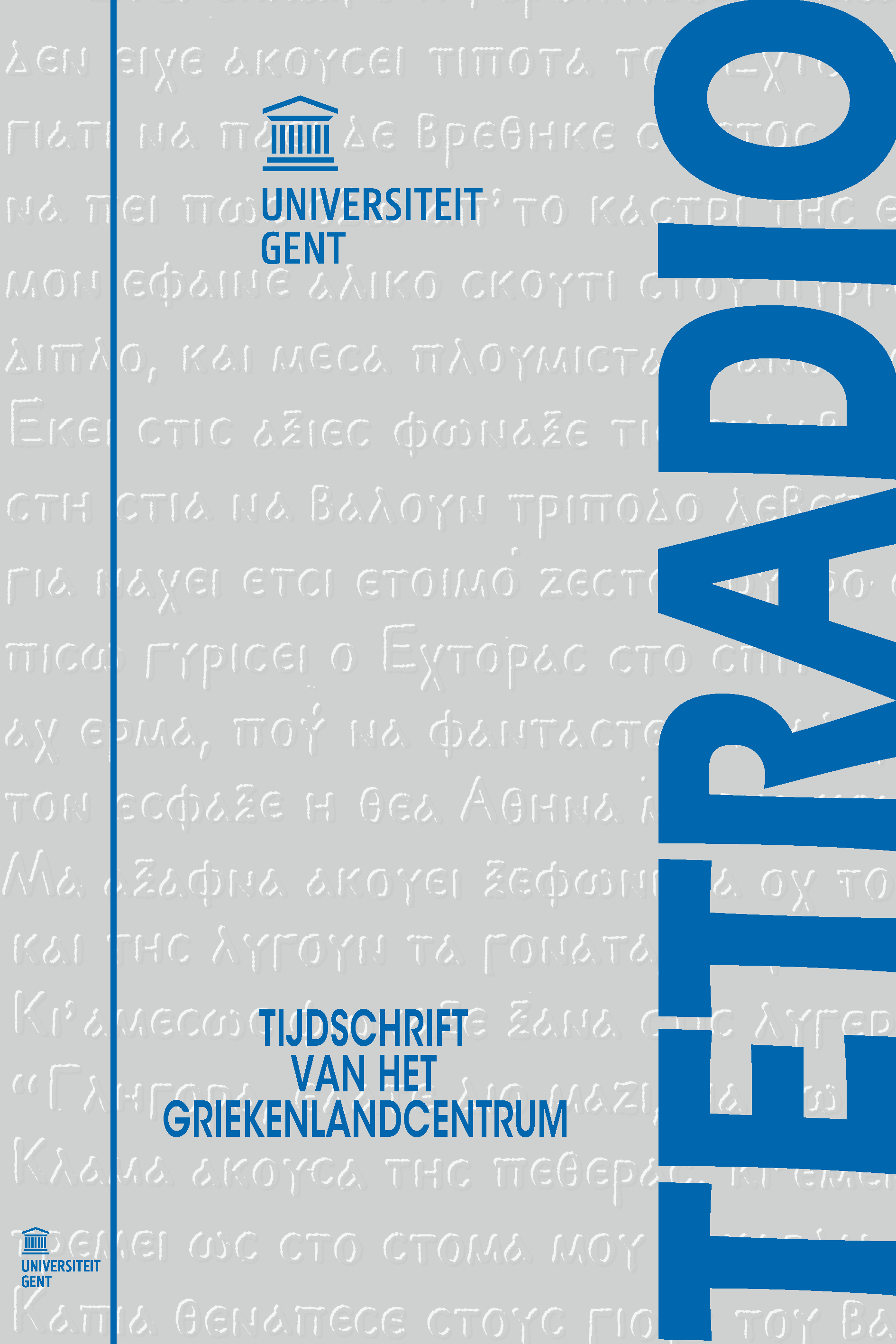Toen Manolios zijn ogen opende... De volgorde van werkwoord, object en subject in bijzinnen bij Nikos Kazantzakis
Abstract
Modern Greek, a language without a fixed constituent order? Must be fairly easy to learn, don’t you think? How many times didn’t we get this reaction since the moment we decided to study not only Ancient, but also Modern Greek. On the falsification of the supposition that Modern Greek is easy to learn once you’ve put enough effort into the language of Herodotus and Thucydides, we won’t waste ink. This slogan however doesn’t apply to the misconception that the constituent order in Modern Greek is free and therefore cannot be analysed. On the contrary. To say it in the words of Helma J.M. Dik: a difference in [constituent] order is presumed to reflect a difference in meaning or function. With this in mind, we examined the order of the verb, object and subject in each subordinate clause we found in Christ Recrucified and Zorba the Greek, two novels written by Nikos Kazantzakis.
How to Cite:
De Vos, I., (2006) “Toen Manolios zijn ogen opende... De volgorde van werkwoord, object en subject in bijzinnen bij Nikos Kazantzakis”, Tetradio 15(1): 6, 131–153. doi: https://doi.org/10.21825/tetradio.91764
Downloads:
Download PDF
View PDF

